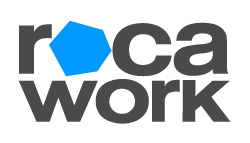What you need to know about Zendesk Chatbots
Have you ever clicked on the messages widget on a website to ask a question related to the product or services delivered? Did you get in return an instant message which attended your question in no time? If yes, you have successfully interacted with a chat bot.
We keep hearing a lot about them in today’s world. Chat bots are used to confirm your account details when calling your favorite help-desk centre, or help you complete a purchase in case you need some assistance before payment, and many other applications. It’s new and trendy so what are chatbots and why are they everywhere?
A chat bot is basically an application built to conduct an on-line chat conversation using text or text-to-speech, in lieu of providing direct contact with a live human agent. A chat-bot is a type of software that can automate conversations and interact with people through messaging platforms.
Customers love to find a live chat widget on your website. Chat is one of the quickest and most personalised options to engage with a company, however this doesn't mean it will provide the wonderful experience you are looking for. When customers get in touch with a chat agent, elements of the entire experience are still in play: how the customer engages with your website, how they interact with your teams, and where they are on the customer journey.
According to Zendesk’s Benchmark Report, Live chat has the highest satisfaction rate amongst all customer service channels. 92 percent of all chat support interactions result in a satisfied customer, hence why offering chat is so often coveted by successful customer service departments. It’s far faster than email support and benefits from the capability to quickly share educational materials, something that phone/voice support can’t do.
Chatbots are created with the Zendesk Sunshine Conversations API, about which you can read more in this article I wrote.
How do chat-bots work?
A chatbot can use predefined rules, natural language processing, machine learning, or deep learning to interpret customers (or employees) requests and provide feedback in return.
However, chat bots will work best when requests are specific and clear.
If integrated with a knowledge base, a chat bot can provide answers to frequently asked questions by redirecting the user to relevant help center articles;
Or maybe you want to connect it to a customer base, in this case, a chatbot can deliver more meaningful and personalized feedback;
Applications are numerous, for example AI chatbots can help customers complete tasks interactively;
Benefits provided by chat bots
Although there’s a fear that chatbots will steal peoples jobs, in fact, employees will be relieved about avoiding repetitive tasks and working in partnership with bots. Also, customers will always prefer to interact with real people, but the experience should be meaningful. Simple tasks like how a password can be changed is handled by a chatbot.
When dealing with requests like this, customers want quick responses. Chat bots communicate with users instantly delivering solutions to their problems in real time. This helps to increase satisfaction and deepen customer loyalty.
Support teams can prioritize inquiries which require a human touch when bots are solving a big chunk of cases.
Zendesk’s findings revealed that over 40 percent of customers consider 24/7 support, in real-time, a top component of a good customer experience. And a study by Accenture found that 83 percent of churned customers insist that better live customer service would have impacted their decision to switch providers.
Taking it to the next level, chatbots can convert customers via their favourite messaging channel by providing opportunities which lead to immediate action. With the right context, chatbots can also automate cross-sell and up-sell activities.
Things to consider when evaluating a chat bot for your business
If you're not sure if your business can leverage the benefits of chatbots, here are few things for you to consider in your decision.
Problems you are trying to address and resources required to solve those problems. Different use-cases require different solutions, therefore the first step is to identify the scenarios you’d like to automate.
What channels you are using and what features are required for those channels. A chatbot will have to be optimized in the way that customers are using it when interacting with your business. Often, customers want to interact with brands on channels they are used to, like Facebook Messenger, WhatsApp, Twitter Direct Message, LINE, Apple Business Chat (which integrates with iMessage), or SMS lend themselves to more convenient conversational experiences.
What is the level of context that your chat bot needs? More context translates to a better chatbot and personalized interaction. For example, beyond passing on relevant information to agents, a bot can also pass on information to a CRM or other software to inform a future interaction.
How conversations are managed between chatbots and agents. Businesses need tools to both deploy chatbot conversations on the front-end and manage them on the back-end. This ensures agents can understand the intent behind every conversation and streamline handoffs between agents and chatbots.
Do you want to setup your Chatbot flows inside your Zendesk? Setup a call with me from my calendar below, it’s in big red 😉



